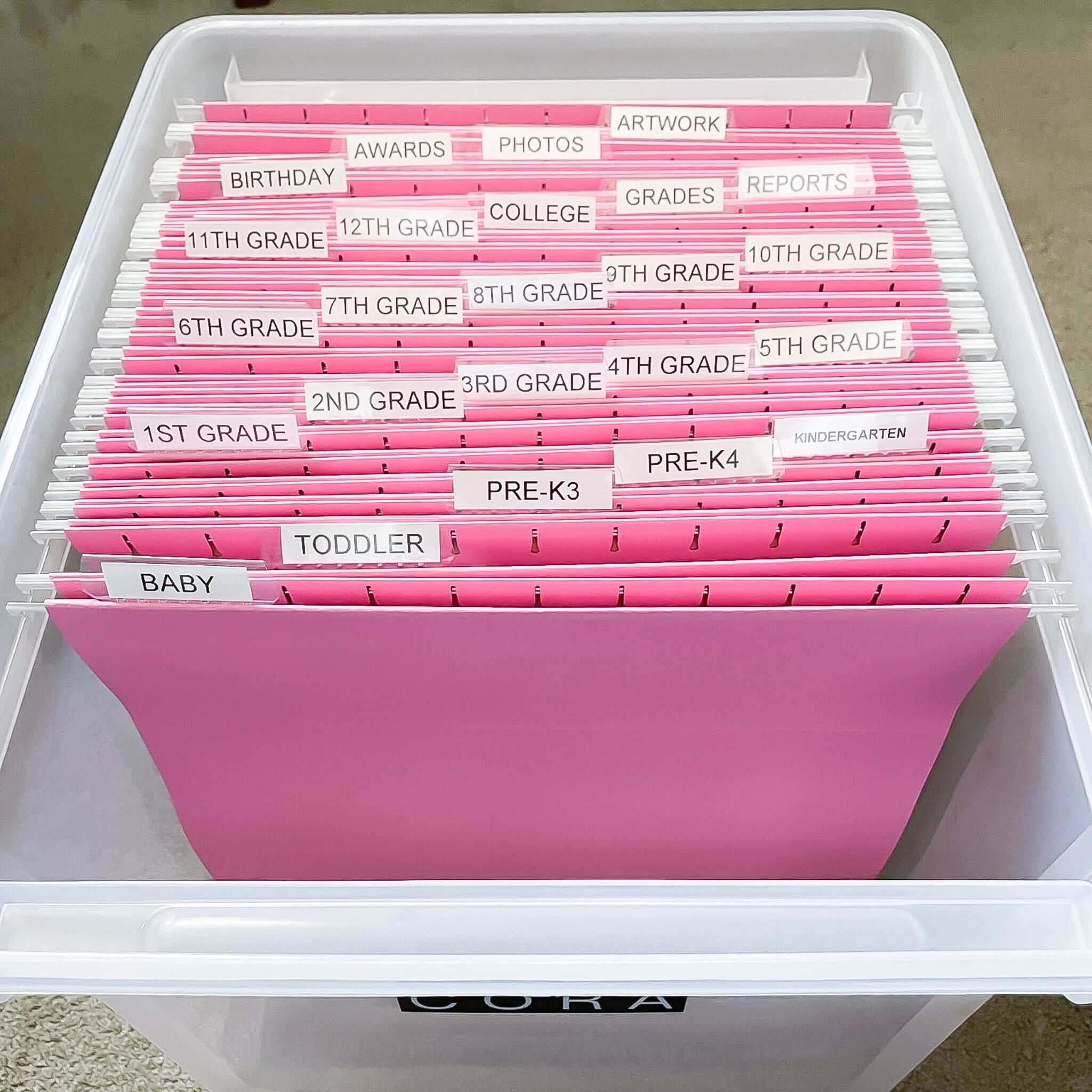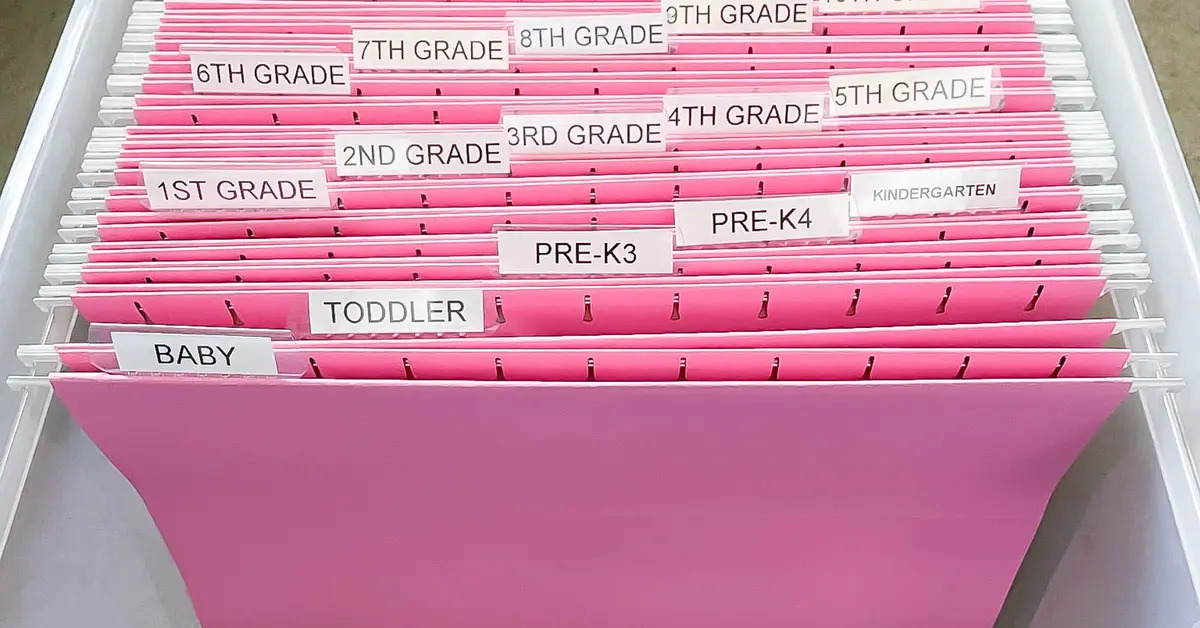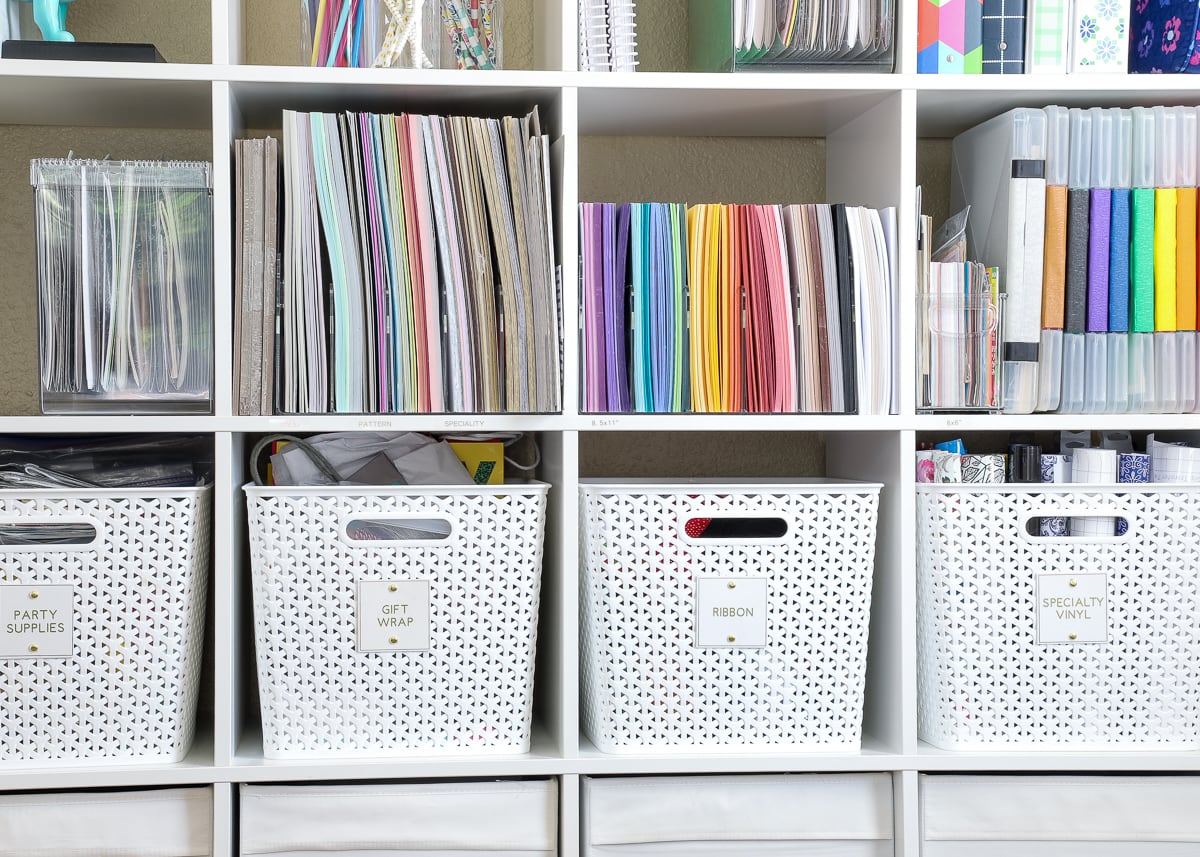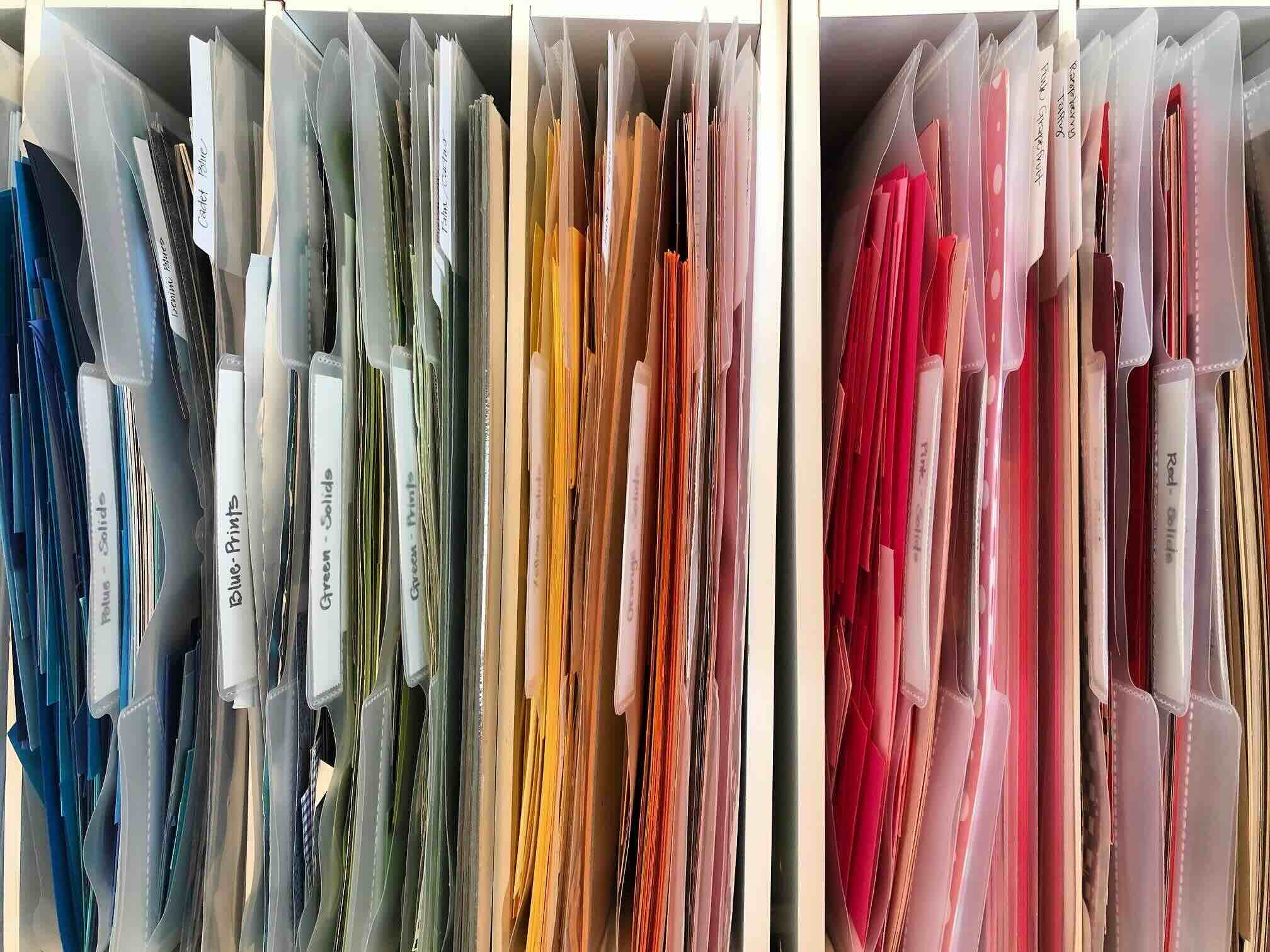

Articles
How To Store Important Papers
Modified: January 23, 2024
Learn how to store and organize your important articles and documents effectively to keep them safe and easily accessible. Discover valuable tips and techniques for efficient paper management.
(Many of the links in this article redirect to a specific reviewed product. Your purchase of these products through affiliate links helps to generate commission for Storables.com, at no extra cost. Learn more)
Introduction
Welcome to the world of paper organization! In today’s digital age, it’s easy to overlook the importance of keeping physical copies of important documents. However, certain papers such as birth certificates, passports, wills, and insurance policies are still crucial to have on hand. Properly storing and organizing these documents will save you time, stress, and potentially even money in the long run.
In this article, we’ll guide you through a step-by-step process to store your important papers securely and efficiently. Whether you need to organize personal documents or business records, we’ve got you covered. From gathering and sorting to choosing the right storage solution, we’ll help you create a system that works for you.
But before we dive into the steps, it’s important to understand why keeping important papers organized is so essential. First and foremost, having all your critical documents in one place will make it easier to find them when you need them. Imagine trying to locate your mortgage agreement or medical records in a sea of clutter – not an ideal scenario!
Besides the convenience factor, organizing your papers also safeguards against potential disasters. Natural disasters like fires and floods can damage or destroy documents, leaving you with the arduous task of replacing them. By protecting and storing these papers properly, you can mitigate the risk of losing vital information.
With that in mind, let’s get started on the journey of organizing and storing your important papers. Follow the steps outlined in this article and discover a system that will give you peace of mind and save you countless hours of searching for misplaced documents.
Key Takeaways:
- Organizing important papers saves time, reduces stress, and safeguards against damage or loss. Follow the 10 steps to create a secure and efficient document management system for peace of mind.
- Regularly update and maintain your document organization system to ensure easy retrieval and access. Stay proactive in managing your documents to prevent unnecessary accumulation and maintain relevance.
Read more: How To Store Important Documents
Step 1: Gather Your Important Papers
The first step in organizing your important papers is to gather them all in one place. This may seem like a daunting task, especially if you have documents scattered throughout your home or office.
Start by creating a list of the documents you need to gather. This can include items such as birth certificates, social security cards, passports, driver’s licenses, insurance policies, bank statements, tax returns, property deeds, and any other important legal or financial documents.
Once you have your list, begin searching for these documents in various areas of your home. Check filing cabinets, drawers, boxes, and even old folders or envelopes. Don’t forget to look in less obvious places like safes, storage units, or even with trusted family members or friends.
As you find each document, make sure to inspect it carefully for any damage or signs of wear and tear. If you come across any documents that are torn, stained, or illegible, consider making a note of them and planning to replace them if necessary.
Additionally, it’s important to keep in mind the significance of digital documents. Many essential papers can now be stored electronically, such as bank statements and tax returns. Be sure to identify these digital documents and include them in your inventory as well.
Once you have gathered all your important papers, it’s a good idea to create a master inventory list. This list will serve as a reference point for you moving forward and will help keep track of the papers you have. Include details such as the document name, date issued, and location of the physical or digital copy.
Remember, this step is crucial as it lays the foundation for the organization process. Taking the time to gather all your important papers will make the subsequent steps much smoother and more efficient.
Step 2: Sort and Organize
Now that you have gathered all your important papers, it’s time to sort and organize them. This step will ensure that you can easily find what you need when you need it, saving you valuable time and frustration.
Begin by sorting your papers into logical categories. Consider grouping them by type, such as personal identification documents, financial records, medical papers, and legal documents. You can further subcategorize within each group if necessary.
As you sort, take the opportunity to discard any unnecessary or outdated documents. Old utility bills, expired warranties, or duplicate copies of documents can clutter your storage space and make it harder to find what you truly need. Make sure to dispose of these papers securely by shredding or safely discarding them.
Once you have sorted your documents into categories, it’s time to establish a filing system. The key here is to choose a method that makes sense to you and is easy to maintain. Some popular options include using color-coded folders, labeled dividers, or clear plastic sleeves to organize your papers.
Consider creating a separate folder for each category and labeling them accordingly. Use clear and concise labels that are easy to read and understand. This will simplify the process of locating specific documents in the future.
If you prefer a digital filing system, you can scan your documents and organize them into folders on your computer or cloud storage. Just make sure to back up your digital files regularly to prevent any data loss.
Remember to keep a copy of your master inventory list within reach as you organize your papers. This will help you keep track of what documents you have and where they are located.
Once you have sorted and organized your important papers, take a moment to create a system for ongoing maintenance. Decide how often you will review and update your files to ensure they remain current and organized. This could be a monthly, quarterly, or yearly task, depending on your needs.
By sorting and organizing your important papers, you’ll have a clear and efficient system in place. You’ll be able to access the documents you need quickly and easily, giving you peace of mind knowing that everything is organized and well-maintained.
Step 3: Choose a Storage Solution
Now that you have sorted and organized your important papers, it’s time to decide on a suitable storage solution. The goal here is to find a method that will protect your documents from damage, while also allowing for easy access when needed.
First, consider the level of protection required for your papers. If you live in an area prone to natural disasters like floods or fires, you’ll want to choose a storage option that can withstand these threats. Look for fireproof and waterproof containers or safes that can provide an extra layer of security for your documents.
Next, assess the available space you have for storage. If you have ample room, you may opt for a file cabinet or drawer that can accommodate your categorized folders. These options are ideal for those who prefer a physical filing system.
If space is limited, consider utilizing plastic bins or storage boxes that can be easily stacked and stored in a closet or under a bed. These containers should be sturdy and secure, to prevent any damage to your paper documents.
For those who prefer a digital storage solution, there are several options to consider. Cloud storage services, such as Dropbox or Google Drive, provide secure and convenient storage for your scanned documents. Make sure to choose a reputable provider with strong security measures in place.
Alternatively, you may choose to invest in a portable external hard drive or thumb drive to store your digital files. This way, you have physical possession of your documents while still benefiting from the convenience of digital storage.
Regardless of the storage solution you choose, it’s important to keep your papers in a location that is easily accessible yet secure. Make sure to communicate with trusted family members or friends where your important documents are stored, in case of an emergency or unforeseen circumstances.
Once you have decided on your storage solution, take the time to physically or digitally organize your documents accordingly. Ensure that your chosen method is practical and sustainable for your needs, and remember to update your master inventory list as you store your papers.
By selecting an appropriate storage solution, you’ll ensure the safety and accessibility of your important papers. Whether you prefer physical or digital storage, find a method that gives you peace of mind and allows you to easily retrieve your documents when required.
Step 4: Safeguard Against Fire and Water Damage
Protecting your important papers from fire and water damage is crucial to ensuring their longevity and usability. Even with the best organizational system in place, unexpected disasters can destroy your documents if they’re not properly protected.
Here are some tips to safeguard your important papers against potential fire and water damage:
1. Fireproof and Waterproof Containers: Invest in fireproof and waterproof containers or safes specifically designed to protect documents. These containers are typically rated to withstand high temperatures and keep the interior humidity-free, ensuring the safety of your papers in case of a fire or water-related incident.
2. Keep Documents Elevated: If storing your documents in cardboard boxes or file cabinets, consider placing them on shelves or racks that are slightly elevated from the ground. This precaution will protect them from potential water damage in case of a flood or leak.
3. Store Documents in Plastic Sleeves: For an extra layer of protection, place your papers inside plastic sleeves or sheet protectors before storing them in folders or binders. This will help guard against water damage, spills, and potential tearing of the documents.
4. Separate Originals from Copies: If possible, store original documents in a separate location from their copies. This will ensure that even if one set gets damaged, you’ll have a backup available.
5. Utilize Fire and Water Resistant Storage Options: Look for file cabinets or storage boxes that come with fire and water-resistant features. These specialized containers are designed to provide an extra layer of protection against such hazards.
6. Regularly Inspect and Replace Damaged Containers: Periodically inspect your storage containers for any signs of wear, damage, or deterioration. Replace them as needed to maintain the integrity of your documents’ protection.
7. Consider Off-Site Storage: If you have extremely valuable or irreplaceable documents, consider using off-site storage services such as safe deposit boxes at a bank. This option provides an additional level of security, knowing that your important papers are kept in a highly secure and controlled environment.
8. Have a Disaster Plan: Create a disaster plan that includes instructions on how to handle and recover your important papers in case of a fire or water-related incident. Communicate this plan with family members or trusted individuals involved in your document management process.
By taking these precautions, you’ll greatly reduce the risk of fire and water damage to your important papers. This will provide peace of mind, knowing that you have taken steps to protect and preserve your valuable documents for future use.
Read more: When Storing Products It Is Important
Step 5: Consider Digital Storage Options
In today’s digital age, storing your important papers digitally can offer numerous benefits. Digital storage not only saves physical space but also provides easier access, quick retrieval, and added security measures to protect your documents from loss or damage.
Here are some key considerations when it comes to digital storage for your important papers:
1. Scan and Digitize Documents: Start by scanning your physical documents using a scanner or smartphone app designed for document scanning. Convert them into high-quality digital files, preferably in PDF format, to ensure compatibility and easy viewing.
2. Organize Digital Files: Create a logical and consistent naming convention for your digital files. Categorize them into folders and subfolders that mirror your physical file organization system to maintain consistency and ease of retrieval.
3. Backup Regularly: Store your digital files on an external hard drive, cloud storage service, or both. Regularly back up your digital files to prevent potential data loss from hardware failure or accidental deletion.
4. Choose a Secure Cloud Storage Provider: If you opt for cloud storage, select a reputable and secure provider. Look for features like encryption, multi-factor authentication, and reliable data centers that offer redundancy and data backups.
5. Consider Encryption: Secure your sensitive digital documents with encryption. This adds an extra layer of protection, ensuring that only authorized individuals can access and view your files.
6. Password Protection: Implement strong passwords and two-factor authentication for your digital storage accounts. These measures help safeguard your documents from unauthorized access.
7. Update Virus and Malware Protection: Keep your computer and devices protected with up-to-date antivirus and malware software. This helps prevent any potential security breaches and ensures the safety of your digital files.
8. Create Digital Copies of Physical Documents: Consider creating digital copies of important physical documents such as certificates, insurance policies, and legal contracts. Having a digital backup provides an additional layer of protection in case the physical copies are lost or damaged.
9. Accessibility and Remote Access: Digital storage allows you to access your important papers from anywhere with an internet connection. This can be particularly handy if you need to retrieve documents while traveling or during emergencies.
10. Consider Legal and Authenticity Requirements: Keep in mind that some documents, such as wills or contracts, may require original physical copies. Familiarize yourself with any legal or authenticity requirements specific to your jurisdiction.
By considering digital storage options, you can enjoy the convenience, security, and accessibility of having your important papers stored digitally. It provides a reliable backup and enhances the overall organization and management of your documents.
Store important papers in a fireproof and waterproof safe to protect them from damage. Make digital copies and store them in a secure cloud storage for added security.
Step 6: Create Backup Copies
Creating backup copies of your important papers is a crucial step to ensure their safety and accessibility. By having multiple copies, you can guard against accidental loss or damage and have peace of mind knowing that your documents are securely preserved.
Here are some key considerations when creating backup copies of your important papers:
1. Digital Backup: If you’ve already digitized your documents, consider storing the digital copies on multiple devices or platforms. This might include external hard drives, USB flash drives, or cloud storage services. Having your documents stored in different locations adds an extra layer of protection against hardware failure or data loss.
2. Physical Copy: While digital backups are convenient, it’s still wise to maintain physical copies of certain documents. Consider making duplicate copies of vital papers and storing them in a separate location from the originals. This could be a safe deposit box, a trusted friend or family member’s home, or a fireproof and waterproof safe at a different location.
3. Regularly Update Backups: As you acquire new important papers or make changes to existing documents, remember to update your backup copies accordingly. Make it a habit to periodically review and update your backups to ensure they remain current and accurate.
4. Test Data Restoration: It’s not enough to simply create backup copies; you should also test your ability to restore the data. Periodically check the integrity of your backup files by restoring them to a different device or location. This will help ensure that your backup copies are accessible and usable when needed.
5. Maintain Backup Security: Just like your original documents, it’s essential to secure your backup copies. If you’re keeping physical duplicates, ensure they are stored in a secure and protected environment. For digital backups, implement strong passwords and encryption measures to ensure the confidentiality and integrity of your files.
6. Keep Track of Backup Locations: Maintain a record of all the locations where you have stored your backup copies. This will help you quickly identify where to retrieve the documents in case of an emergency or when you need access to them.
7. Consider Redundancy: For added security, consider implementing redundancy in your backup strategy. This can involve having both physical and digital backups, as well as keeping duplicate copies in different locations. Redundancy ensures that even if one backup fails or becomes inaccessible, you still have alternative options available.
8. Use Verified and Reliable Storage Methods: When relying on cloud storage or online backup services, choose reputable providers with a proven track record of security and reliability. Research and read reviews to ensure that the chosen service meets your specific needs and offers the necessary features for your important documents.
By creating backup copies, you minimize the risk of losing your important papers and ensure their availability, even in unforeseen circumstances. Take the time to establish an effective backup strategy that fits your needs, and regularly update and maintain your backup copies to ensure their continued usefulness.
Step 7: Maintain Regular Updates
Regularly updating your important papers is essential to ensure accuracy, relevancy, and legal compliance. By staying on top of updates and revisions, you can avoid potential issues, keep your documents current, and maintain their validity.
Here are some key aspects to consider when maintaining regular updates for your important papers:
1. Review Dates and Expiration: Keep track of the expiration dates or validity periods of documents such as passports, identification cards, and licenses. Set reminders well in advance of these dates to ensure you have ample time to renew or update them without any disruption in your daily life.
2. Familiarize Yourself with Legal Requirements: Stay informed about any legal requirements or changes related to the documents you possess. This could include understanding new tax laws, changes in regulations for insurance policies, or updates to estate planning guidelines. Consult with legal or financial professionals as needed to ensure compliance.
3. Update Personal Information: If you undergo any life changes that affect your important papers, such as a change of name, address, or marital status, make it a priority to update these details on your documents. Ensure that the information reflects your current situation accurately.
4. Stay Informed about Policy Changes: If you have insurance policies or financial accounts, regularly review the terms, coverage, and any updates to ensure they align with your needs and expectations. Contact your insurance provider or financial institution for clarifications or to make adjustments as necessary.
5. Keep Digital Copies Updated: If you store your important documents digitally, ensure that you have updated copies of the most recent versions. Replace outdated files with the current versions and maintain an organized folder structure to avoid confusion or mix-ups.
6. Check Document Accessibility: Periodically review the accessibility of your stored documents. Ensure that you can easily locate and retrieve both physical and digital copies when needed. Remove any obstacles or barriers that may hinder access to your important papers.
7. Maintain Communication with Relevant Parties: If you have shared important papers or documents with trusted individuals, such as family members or attorneys, communicate with them regularly to ensure they have up-to-date copies. Inform them of any changes or updates to your documents to keep everyone on the same page.
8. Set Regular Review Dates: Establish a schedule to review and update your important papers at regular intervals. This could be annually, biannually, or at a frequency that suits your specific needs. Use this time to assess the status of your documents, make any necessary updates, and ensure that everything remains in order.
By maintaining regular updates, you ensure that your important papers are accurate, relevant, and compliant with legal requirements. Stay proactive, stay informed, and make necessary revisions to keep your documents up to date and in line with your current circumstances.
Step 8: Secure Your Storage Space
Securing your storage space is crucial to protect your important papers from unauthorized access, theft, or damage. By implementing appropriate security measures, you can ensure the confidentiality and integrity of your documents.
Here are some key considerations when it comes to securing your storage space for important papers:
1. Choose a Safe and Secure Location: Select a storage space that is secure and less prone to external threats. This could be a locked filing cabinet, a designated safe, or a locked room with restricted access.
2. Install Security Systems: Consider installing security systems such as alarms, surveillance cameras, or motion sensors to deter intruders and protect your storage space. Make sure to choose a system that fits your needs and budget.
3. Limit Access: Control access to your storage space by keeping the keys or passcodes secure. Grant access only to authorized individuals who require it. If necessary, consider using lockboxes or key cards to further restrict entry.
4. Utilize Locks and Safes: Lock your storage containers or cabinets with strong and tamper-resistant locks. Consider using high-quality combination or key locks, and consider the added protection of a fireproof and waterproof safe for extra security.
5. Monitor and Restrict Duplicate Keys: Keep track of duplicate keys or passcodes for your storage space. Limit their distribution and maintain strict control over who has access to them. Regularly review and update the list of authorized individuals who can retrieve the keys or access codes.
6. Protect Against Environmental Factors: Protect your storage space from environmental risks such as extreme temperature, humidity fluctuations, or pests. Ensure that the area is well-ventilated and free from moisture or pests that could compromise the integrity of your documents.
7. Implement Confidentiality Measures: If you have documents that contain sensitive or confidential information, take additional precautions to protect their privacy. Store them separately or in locked compartments within your storage space to limit access to authorized individuals.
8. Regularly Inspect and Maintain: Periodically inspect your storage space for any signs of damage, wear, or unauthorized tampering. Conduct regular maintenance to ensure the longevity and security of your storage area.
9. Inform Trusted Individuals: Communicate with trusted individuals about the location and security measures of your storage space. This ensures that they are aware and can take appropriate actions in case of any emergencies or unforeseen circumstances.
10. Document Storage Insurance: Consider obtaining insurance coverage for your important documents. Contact your insurance provider to discuss options for protecting your documents against theft, damage, or loss.
By securing your storage space, you safeguard your important papers against unauthorized access and potential damage. Invest in appropriate security measures, maintain control over access, and regularly assess and maintain the integrity of your storage area for the ultimate protection of your documents.
Read more: How To Store Important Documents At Home
Step 9: Dispose of Unnecessary Papers
As you organize your important papers, it’s crucial to dispose of unnecessary documents properly. Keeping unnecessary papers not only adds clutter to your storage space but also increases the risk of identity theft or unauthorized access to personal information. By disposing of these papers securely, you can maintain the integrity and security of your document management system.
Here are some guidelines for disposing of unnecessary papers:
1. Identify and Sort: Review your documents and identify those that are no longer needed. This can include expired contracts, outdated statements, irrelevant receipts, or duplicate copies of documents you have already filed or digitized.
2. Shred or Destroy: For documents that contain sensitive or personal information, it’s important to shred or destroy them to prevent identity theft. Invest in a cross-cut shredder that will ensure the papers are shredded into small, confetti-like pieces to make reconstruction impossible.
3. Consider Professional Shredding Services: If you have a large volume of papers to dispose of, consider using professional shredding services. These services provide secure, confidential, and environmentally responsible document destruction. They often offer on-site shredding or secure off-site shredding options.
4. Verify Proper Disposal: If you choose to dispose of papers in standard trash bags, make sure to mix them with other non-sensitive waste to make retrieval difficult. Additionally, consider taking an extra step by tearing or ripping important information to further ensure their privacy.
5. Dispose of Digital Files Securely: If you have digital files that are no longer needed or are outdated, make sure to delete them securely. Use a reliable file shredding software that permanently deletes the files and overwrites them to prevent any potential recovery.
6. Organize Disposal Records: Keep a record of the documents you have disposed of and the date of disposal. This will help you trace the destruction process and provide a clear audit trail if required.
7. Dispose of Unneeded Physical Storage: If you have excess physical storage containers or filing cabinets that are no longer necessary, consider donating or recycling them. Dispose of them responsibly to lighten the load and optimize your storage space.
8. Review Document Retention Guidelines: Familiarize yourself with document retention guidelines specific to your country or industry. Certain documents may have legal requirements for retention periods, so make sure you are compliant with these regulations.
9. Revise Document Organization System: After disposing of unnecessary papers, take the opportunity to reassess your document organization system. Ensure that your filing categories or digital folders are updated to reflect the changes and to maintain an efficient and streamlined document management process.
10. Maintain a Minimalist Approach: Moving forward, adopt a minimalist mindset when it comes to document retention. Regularly evaluate and review new documents to determine if they are essential for future reference. Avoid unnecessary hoarding and opt for a clutter-free and efficient document management system.
By responsibly disposing of unnecessary papers, you not only declutter your storage space but also reduce the risks associated with identity theft and unauthorized access to your personal information. Follow these guidelines to ensure the proper disposal of documents and maintain the security of your important papers.
Step 10: Retrieve and Access Easily
After diligently organizing and managing your important papers, it’s crucial to ensure easy retrieval when you need them. The final step is to establish a system that allows you to locate and access your documents quickly and efficiently.
Here are some key considerations to help you retrieve and access your important papers easily:
1. Maintain an Updated Inventory: Keep your master inventory list up to date. This list should contain details of the documents you have, their location (both physical and digital), and any relevant dates. This serves as a quick reference guide when you need to locate a specific document.
2. Use a Consistent Filing System: Stick to a consistent and intuitive filing system for your physical documents. Organize them into labeled folders or binders and arrange them logically. Consider using color-coding or alphabetical order to further enhance accessibility.
3. Create a Digital Document Index: If you store your documents digitally, create an index or search-friendly naming convention for easy retrieval. Utilize keywords or tags to categorize and identify your digital files quickly.
4. Implement Effective Labeling: Clearly label your physical storage containers, folders, and digital folders to ensure easy identification. Use descriptive and concise labels that accurately reflect the contents of each location.
5. Utilize Technology Tools: Take advantage of technology tools to simplify document retrieval. Use document management software or apps that allow you to search for keywords or tags, making it faster and more efficient to find specific documents.
6. Group Related Documents: Store related documents together to facilitate easy retrieval. For example, keep all insurance-related documents in one folder or in a dedicated section of your digital filing system. This way, you can locate and access them without having to search through multiple locations.
7. Maintain Minimal Clutter: Regularly declutter your storage space by removing any unnecessary or outdated documents. This ensures that only relevant and current papers are accessible, making it easier to find what you need.
8. Review and Test Access: Periodically review and test your access to both physical and digital documents. Ensure that you can retrieve and open the necessary files without any issues. Make adjustments as needed to improve the accessibility and usability of your document retrieval system.
9. Communicate Document Locations: Inform trusted individuals, such as family members or key stakeholders, about the location and organization of your important papers. This ensures that they are aware of the system in place and can access the documents if necessary.
10. Regularly Update and Maintain: Continuously update and maintain your document management system. Remove outdated or irrelevant documents, update file names or labels as needed, and regularly check the integrity of digital files to ensure they are accessible and in good condition.
By following these steps, you will establish a system that allows you to retrieve and access your important papers with ease. A well-organized and efficient document retrieval process saves you time and reduces stress, ensuring that your important documents are readily available whenever you need them.
Conclusion
Congratulations! You have successfully organized and safeguarded your important papers. By following the ten steps outlined in this article, you have created a system that allows for easy retrieval, protects against potential risks, and ensures the longevity of your documents.
Remember, organizing your important papers offers numerous benefits. It saves you time by making it easier to locate specific documents when needed. It also protects your papers from damage, loss, or unauthorized access, providing you with peace of mind.
Throughout this process, you have learned to gather all your important papers, sort and organize them into logical categories, choose a suitable storage solution, and safeguard against fire and water damage. You have considered digital storage options, created backup copies, maintained regular updates, secured your storage space, disposed of unnecessary papers, and established a system for easy retrieval and access.
By implementing these steps, you have taken control of your important papers, enhancing your document management system and overall organization. You are now better prepared for emergencies, legal requirements, and everyday life situations that may require access to these important documents.
However, it’s important not to consider this process as a final destination. Regularly review and update your document organization system to ensure it remains current and effective. Stay proactive in managing your documents, and regularly assess their relevance and necessity to prevent unnecessary accumulation of papers.
Remember to periodically check the condition and security of your stored papers, and communicate any changes or updates to trusted individuals who may need access to your important documents.
By maintaining an organized and secure system for your important papers, you are setting yourself up for success in both personal and professional aspects of life. An efficient document management system allows you to focus on what truly matters, while confidently knowing that your important papers are well-organized, protected, and easily accessible.
So take a moment to appreciate the hard work you have put into organizing your important papers, and reap the benefits of a streamlined and stress-free document management system.
Frequently Asked Questions about How To Store Important Papers
Was this page helpful?
At Storables.com, we guarantee accurate and reliable information. Our content, validated by Expert Board Contributors, is crafted following stringent Editorial Policies. We're committed to providing you with well-researched, expert-backed insights for all your informational needs.














0 thoughts on “How To Store Important Papers”